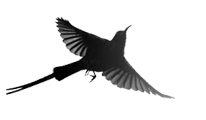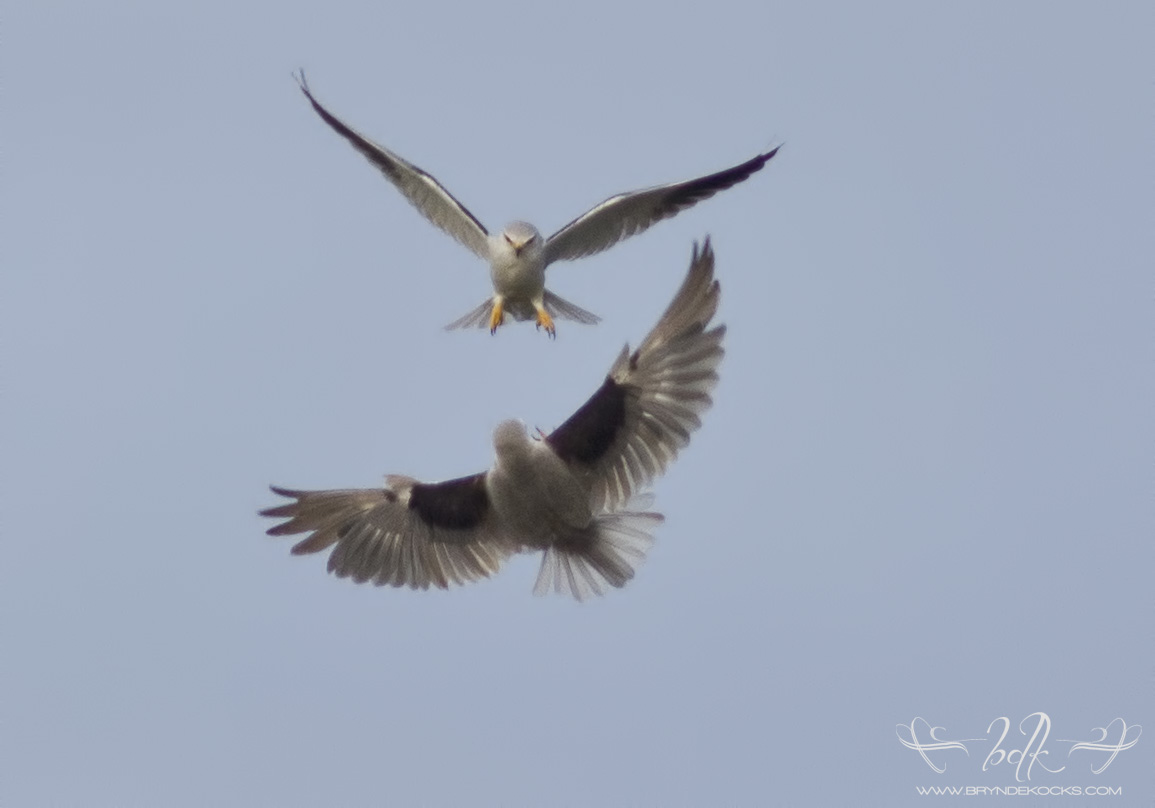The Tristan Challenge
Prior to my recent Flock at Sea cruise, I knew little about the Tristan Albatross. Sure, I had seen it in my guide books and the fact that it was listed as a critically endangered species. But only after the events on board the MSC Sinfonia did I begin to read about the bird and the complexities that lie within the differentiation between it from the near identical Wandering Albatross.
Something then happened that peaked my interest in the whole situation, while on board Peter Harrison had apparently identified a couple individual Albatrosses that we had seen, as Tristan. Peter Harrison is a leading sea birding expert and authored the 1983 book “Seabirds: An Identification Guide“, which was extremely well received and offered great information on sea birds from around the world. Peter Harrison is very well respected as a birder and his opinion on the Tristan Albatross is seen by many as gospel. However, there is some hesitancy from both amateur birders and other well known individuals, some who specialize in sea birds, as to whether there is enough public information available to conclude that the identification of the species at sea is viable, at least until all of Peter Harrison’s findings are public and undergone peer review.
I am no expert, and am simply reiterating what I have heard and what I have read, along with sources. But since there seems to be such a large interest in the topic at the moment, condensing of information seemed to be of potential use to some.
The Studies on Tristan Albatross
Peter Harrison has spent the past few years studying the Tristan Albatross and working specifically on finding ways to separate them from Wandering Albatross in the field. He has shared some of his findings in talks that he has done, as well as explaining them to keen individuals who took the time to discuss the subject with him. However, his work remains unpublished and has yet to undergo peer review. So it may be a while before we are able to see what Harrison has managed to fully uncover in his research. He is however, not the first person to study the Tristan Albatross and attempt to piece together how we can help differentiate them from a Wanderer. Richard J. Cuthbert together with Richard A. Phillips and Peter Ryan submitted a study titled “Separating the Tristan Albatross and the Wandering Albatross Using Morphometric Measurements” back in 2002, which was then published the following year. In the study, it is mentioned that the Tristan Albatross is smaller than the Wandering Albatross in every respect, with bill measurements discriminating 97 to 98% of individuals.
The study was the first to publish data on the body size of Tristan Albatross, with the research having been done on Cough Island in the South Atlantic. In the study, 60 individual birds (30 of each species) were meassured during the 2001 and 2002 breeding seasons. The study found that while Tristan Albatross were smaller than Wandering Albatross, there was some overlap with the largest male Tristan being larger than the smallest female Wandering. This overlap means that while useful in cases of long-liner fatalities where measurements and sexing can be done, at sea the measurement does little to assist in identification. Similarly, while bill size was smaller on the Tristan, the overlap made it a feature that can’t be used as visual diagnostic at sea.
In another article by Peter Ryan, freely available on the fitzpatrick website — he discussed some of the basic elements talked about in the study mentioned above, as well as focusing more on the issue of plumage. It is a short, yet recommended read for anyone interested in the topic, which you can read here. The article above actually also sources Peter Harrison’s 1983 publication in some of the discussions on Albatross.
The article goes on to discuss the variation in plumage between male and female birds, as well as the changes through age. “I could find no definitive character that allows for separation, but there are some possible differences that require further investigation”, a latter paragraph states. Peter Ryan then continues to talk about how ability to determine age and sex could help in separating the species based of plumage colouration.
In summary, the article leaves a lot open for the investigation and a lot of space for new discoveries regarding the identification of Tristan. It is this area of missing data that Peter Harrison has spent recent years investigating and seemingly with quite some success. Once his study has been peer reviewed, we could easily see ourselves with useful techniques in being able to distinguish these two birds in the field. Talking to a few individuals who had the opportunity to sit privately with Peter Harrison and get a sneak peek into his findings seemed to suggest that the keys to Tristan identification may lie in the ability to first identify the age of the bird, which would fit in to what was said in the article by Peter Ryan.
Peter Ryan is also said to be undertaking a project whereby both Wandering Albatross and Tristan Albatross are photographed extensively on their respective breeding islands and cataloged with their ages. A step which could also prove extremely useful in fine tuning any differences in plumage we may find, and could further back up that which Peter Harrison is set to publish.
Another sea birding expert Steve Howell, in his book “Petrels, Albatrosses, and Storm-Petrels of North America: A Photographic Guide” discusses the Tristan Albatross (reffered to in his writing as ‘Gough Albatross’) and mentions dark vermiculations on younger individuals [Page 333].
The Information On Deck
Below is an individual that was spotted recently on the Flock At Sea 2017 cruise, which Peter Harrison positively identified as a Tristan Albatross. Now, I didn’t get the chance to speak to him personally, so I am merely reiterating the consensus by those who did manage to discuss the topic, in the hopes of giving a glimpse into the kinds of features we may expect Peter Harrison to discuss in his forthcoming study, as well as the outcome of the new study by Peter Ryan.
Peter Harrison aged this individual at between 4 and 5 years old.

Piano Key Tail: The piano key tail feature was one that Peter Harrison discussed, but again this is a feature that seems to require aging first. Older Wandering Albatrosses have tails that whiten with age, and during that process there is a period whereby they are also left with the same ‘piano’ tail appearance. However, it was my understanding that this is a feature found in younger Tristan Albatross, so in theory I suppose one could use the upper wings to help generally age the Albatross, and from there you may be able to tell whether any piano key tail is the result of an aging Wanderer or instead a Tristan.
Smaller Body and Shorter Bill: These remain useful only in cases of physical measurement and remain mostly useful for identification at sea, albeit that a confirmed distinction occurs between species.
Back Pattern: Another feature that was mentioned by those who spoke to Peter Harrison was the presence of a sharp defined area of white which extends from the back onto the upper wing. The statements were that on Wanderers, this pattern is less defined with less evidence of a solid straight edge down the wing.
Leading Edge: It was also apparently said that the Tristan is more likely to have a prominent leading edge on the wing. Wandering Albatross may still have a slight leading edge, but this feature is typically more prominent in Tristans.
Unfortunately without Peter’s full research we don’t know just how reliable these features are, as individual Wandering Albatross photographed on South Georgia show many of these elements, in many cases combined with each other. And this is where a lot of the hesitancy lies. We simply don’t know enough to be able to be confident about it, and these are words echoed by some of the more well known local birders, many of whom have vast sea birding experience.
Is The Tristan Tickable?
It has already been shown that Tristan Albatross do visit our waters, and some estimate that as many as one in four Wandering Albatrosses seen in the trawling areas off Cape Point could actually be Tristan Albatross, it’s just simply a case of no way to be sure, apart from taking measurements by hand.
Because of this, the Tristan will more than likely remain a missing tick for many local birders, at least for the next year or so, until more information is available. And even then, some remain cautiously optimistic.
While Peter Harrison’s confirmation of the above bird as a Tristan has meant quite a few individuals have already made the mark on their life list, others simply aren’t satistisfied yet. In the end though it is a grey area, and one cannot blame those who choose to consider the Tristan Albatross as a seen species. Personally, as much as I’ve tried to come across something to validate my desire to tick it — I still cannot find enough evidence in the currently public data that would allow me to do so.
Regardless of who is right or wrong in the end, I think we are all after the same common goal — understanding the birds better and learning as much as we can. It is no doubt an exciting venture, which may yield some exciting results in the next few years, as until this point extensive research on plumage and age relationships between the two species have not been very extensively studies, not to the degree which is happening at the moment.
In closing, I just wish to once again state that I am by no means an expert on the topic and in fact know very little about sea birds. This post was merely a collection of public data and quotes from individuals I have talked to about the matter.








One Comment